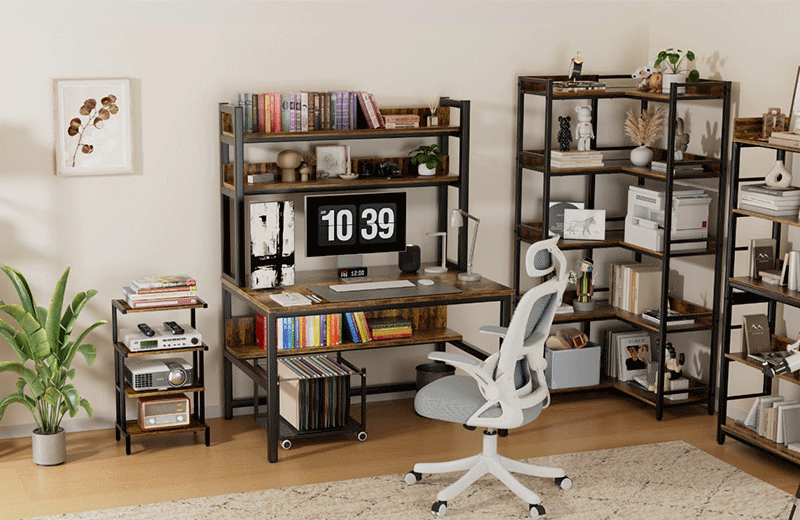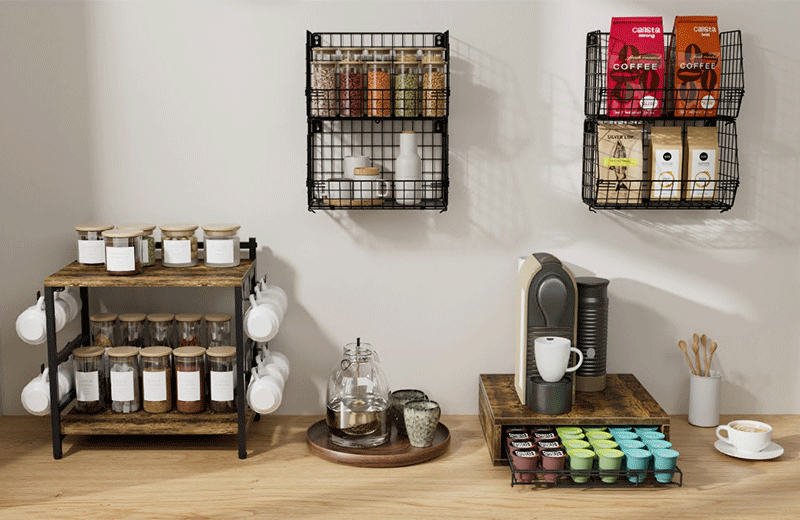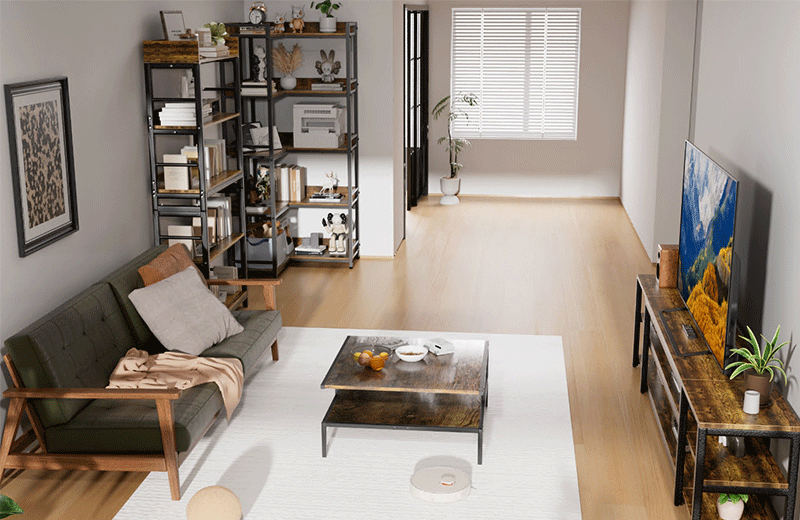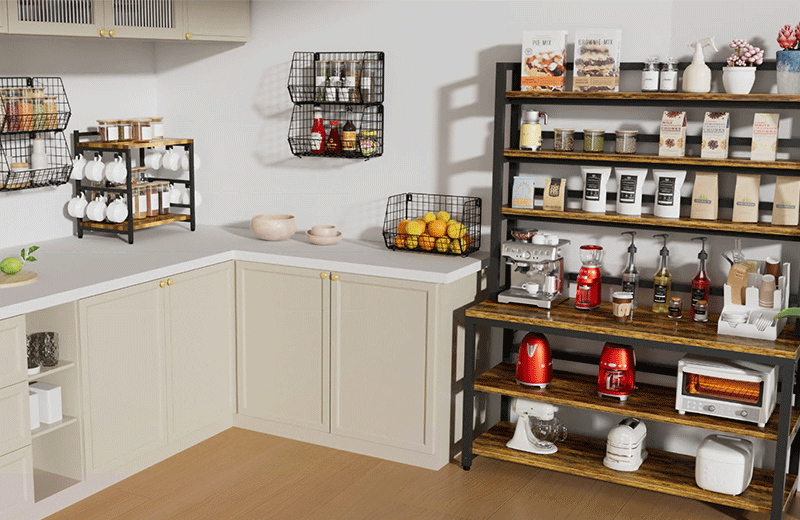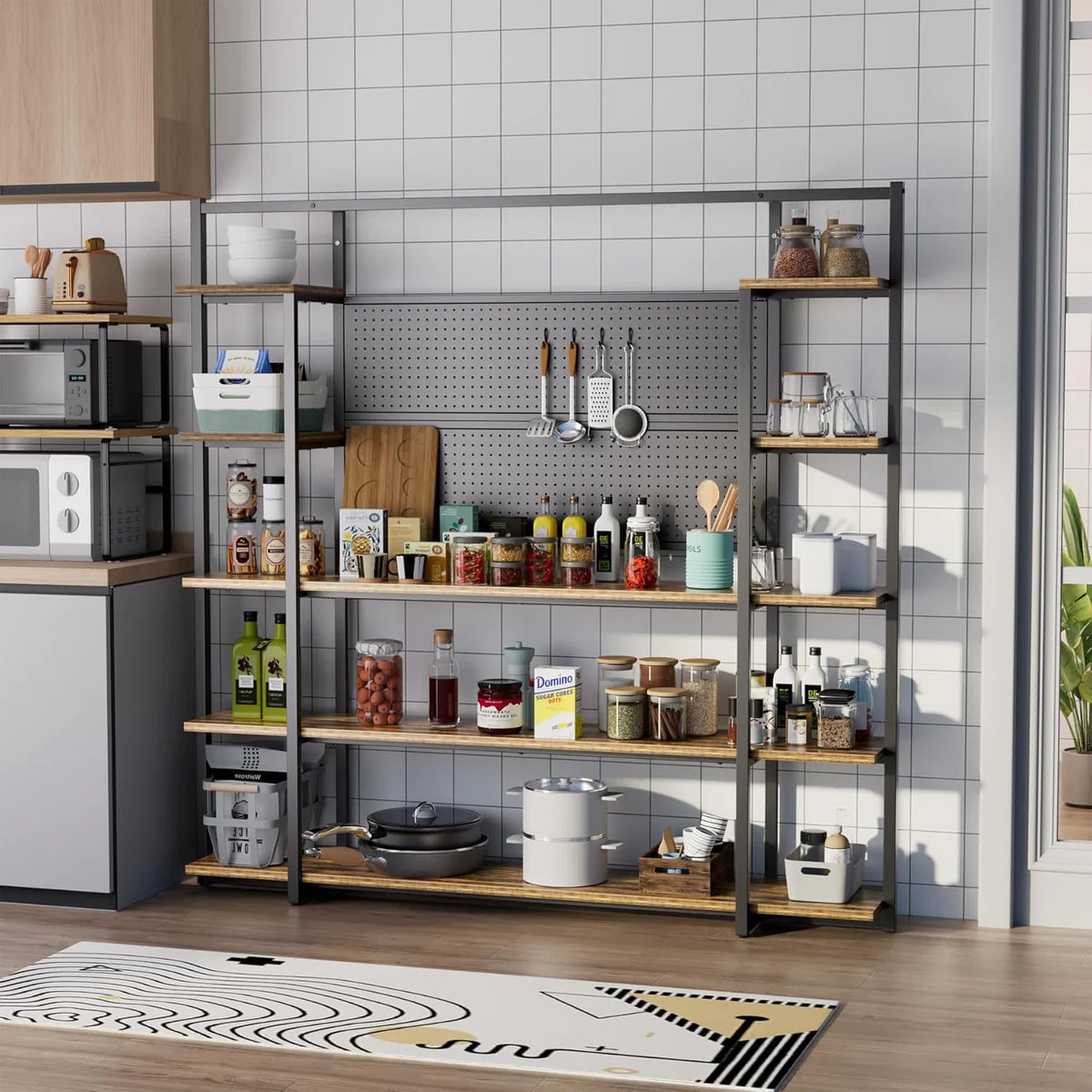Bakers racks have long been a staple in kitchens, originally designed for bakers to cool their freshly baked goods. However, their functionality has evolved significantly over the years, making them a versatile piece of furniture that can enhance both the aesthetic and practicality of any kitchen. This article explores the history, design features, uses, benefits, and tips for choosing the perfect bakers rack for kitchen.
The Evolution of Baker's Racks
Historically, baker's racks emerged in the 17th century as essential tools for bakers. These racks were primarily made from conductive materials like wrought iron or steel, allowing heat to dissipate quickly from baked goods. Bakers used these racks not only for cooling but also for rolling out dough and storing essential baking supplies such as flour and sugar.As time progressed, non-bakers began to adopt baker's racks for various purposes beyond baking. Today, these racks are utilized in kitchens around the world as multifunctional storage solutions that can hold everything from kitchen appliances to decorative items.
Design Features of Baker's Racks
Baker's racks come in various styles and designs to suit different tastes and kitchen layouts. Here are some common features to consider:- Materials: Baker's racks are typically made from a combination of wood, metal, and sometimes glass. Metal frames provide durability and a modern look, while wooden shelves add warmth and a rustic touch.
- Shelving Options: Most baker's racks feature multiple shelves that can be open or closed. Open shelves allow for easy access to items and can be styled with decorative pieces, while closed cabinets provide hidden storage for less visually appealing items.
- Storage Solutions: Many baker's racks come equipped with drawers or cabinets that offer additional storage options for utensils, linens, or pantry items. Some models even include wine racks or hooks for hanging mugs and utensils.
- Counter Space: A key feature of baker's racks is the countertop area that provides extra workspace in the kitchen. This space can be used for food preparation, placing small appliances like microwaves or coffee makers, or even as a serving area during gatherings.
- Style Variety: Baker's racks are available in a wide range of styles—from traditional to modern—allowing homeowners to choose one that complements their kitchen decor. Popular styles include farmhouse, industrial, contemporary, and vintage designs.
Uses of Baker's Racks in the Kitchen
Baker's racks are incredibly versatile and can serve multiple functions in your kitchen:- Storage for Appliances: Use a baker's rack to store small appliances like microwaves, toasters, or coffee machines. This helps free up counter space while keeping your essentials within easy reach.
- Display Space: Showcase your favorite cookbooks, decorative dishes, or plants on the open shelves of a baker's rack. This adds a personal touch to your kitchen while keeping items organized.
- Pantry Organization: If you have limited pantry space, a baker’s rack can serve as an additional storage solution for canned goods, spices, and dry ingredients.
- Baking Station: For avid bakers, a baker’s rack provides an excellent space for rolling out dough and storing baking supplies like mixing bowls and measuring cups.
- Coffee Bar: Transform your baker’s rack into a coffee station by organizing your coffee maker, mugs, and coffee supplies on the shelves for easy access during your morning routine.
- Serving Station: During gatherings or family meals, a baker’s rack can double as a serving station where you can place appetizers or drinks for guests.
Benefits of Using Baker's Racks
Incorporating a baker’s rack into your kitchen offers numerous advantages:- Maximizes Space: Baker’s racks utilize vertical space efficiently, making them ideal for smaller kitchens where floor space is limited.
- Enhances Organization: With designated areas for various items—appliances on the countertop and ingredients on the shelves—a baker’s rack helps keep your kitchen organized and clutter-free.
- Improves Accessibility: Having frequently used items easily accessible on a baker’s rack streamlines cooking and baking processes.
- Aesthetic Appeal: A well-styled baker’s rack can serve as an attractive focal point in your kitchen decor, adding character and charm to the space.
- Versatility: Beyond the kitchen, baker’s racks can be used in dining rooms, living areas, or even outdoor spaces due to their adaptable design.
Choosing the Right Baker's Rack
When selecting a baker’s rack for your kitchen, consider the following factors:- Size and Dimensions: Measure your available space before purchasing to ensure that the rack fits comfortably without overwhelming the area. Consider both height and width when making your selection.
- Material Selection: Choose materials that complement your existing decor while considering durability and maintenance requirements. Metal frames offer modern appeal while wooden options provide warmth.
- Storage Needs: Determine what you plan to store on the rack—be it appliances, cookbooks, or pantry items—and select a model with appropriate shelving options (open vs. closed storage).
- Style Compatibility: Consider your home's overall design theme when choosing a baker’s rack; whether modern or traditional styles suit your taste best will influence your decision.
- Budget Considerations: Baker’s racks come in various price ranges; set a budget before shopping to help narrow down options that fit within your financial parameters.
Styling Your Baker's Rack
Once you've chosen the perfect baker’s rack for your kitchen, it's time to style it! Here are some tips to create an attractive display:- Mix Functional Items with Decor: Combine practical items like cookbooks or utensils with decorative elements such as candles or plants to create balance on your shelves.
- Vary Heights: Use items of varying heights to create visual interest—stack books horizontally on one shelf while placing taller vases on another.
- Use Baskets for Organization: Incorporate baskets or boxes on lower shelves to hide clutter while maintaining easy access to frequently used items.
- Incorporate Greenery: Adding plants enhances air quality while bringing life into your space; consider small potted herbs in the kitchen or trailing vines in living areas.
- Seasonal Decor Changes: Refresh your styling by incorporating seasonal decorations—swap out decor elements based on holidays or seasons for an ever-changing look.

